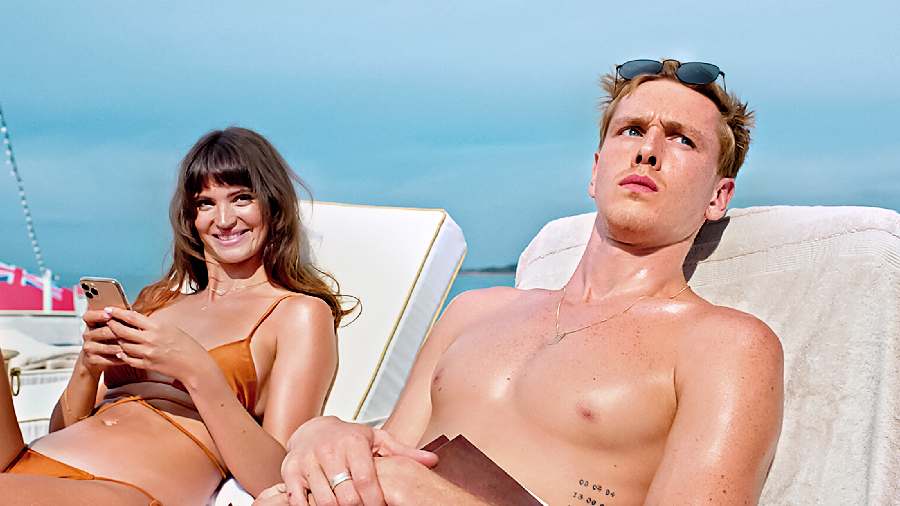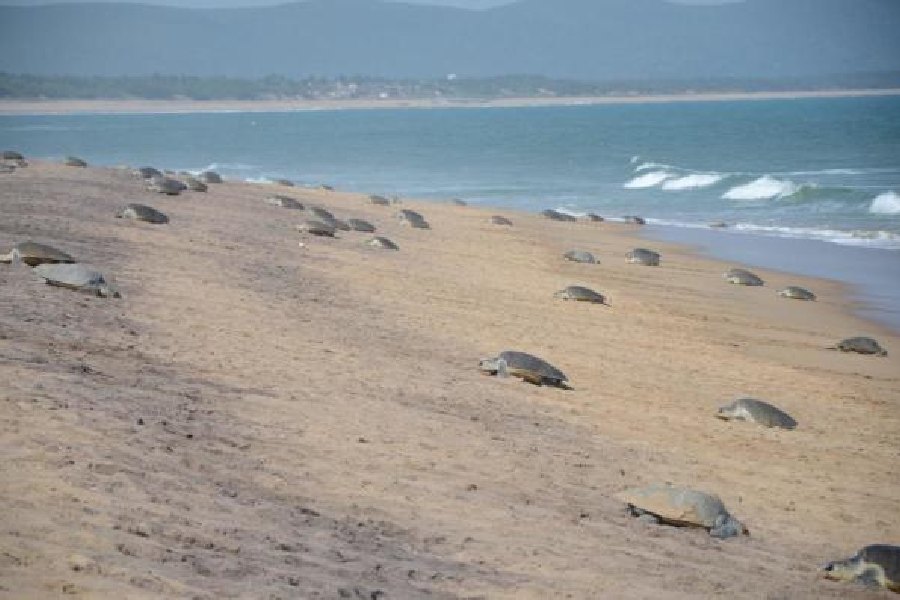I ’m tempted to begin this review of Ruben Ostlund’s Triangle of Sadness by apologising to Lars von Trier and Michael Haneke for the skepticism, ambivalence and outright frustration I’ve expressed toward some of their films in the past. It’s not that I take any of it back: I still find the tendency in European cinema that those directors represent to traffic frequently in facile provocation and sadomasochistic arousal of the bien-pensant bourgeois audience’s eager self-contempt. But the two of them at least approach the boundless awfulness of the modern metropolitan West with formal rigour and intellectual discipline, and for that reason, they have sometimes left me not merely annoyed, but genuinely disturbed, even moved.
Ostlund, who, like Haneke, has won the Palme d’Or at Cannes twice — von Trier only managed it once, for Dancer in the Dark — is a different matter. They are influential filmmakers. He is, in the debased social media sense of the word, an influencer. He’s like Clarabell to von Trier’s Pagliacci or the Hamburglar to Haneke’s Professor Moriarty: an amusing enough character, but only if you don’t take him too seriously.
Which may suit him fine. His most recent films — Force Majeure and the two Cannes laureates, The Square and Triangle of Sadness — are best when they’re silliest. But Ostlund’s modest comic skills are tethered to grandiose satirical intentions. Triangle of Sadness, in effect a shaggy-dog art-house reboot of Gilligan’s Island, has many insights to offer about the shallowness of supermodels, the vulgarity of Russian oligarchs and the brutal inequality of global consumer capitalism.
Among Ostlund’s other startling revelations: water is wet, and excrement stinks. Those two substances are in abundant supply during a storm at sea that buffets a luxury yacht where the models, the oligarch and other characters have been cavorting. During dinner, there’s a lot of vomiting, and then when the toilets back up there’s even more. The resulting mess is what you might call a mixed metaphor, or maybe just a redundant one.
Before the tempest, we have spent some time with Carl (Harris Dickinson) and Yaya (Charlbi Dean), professional hotties who supplement their modelling work with social media self-promotion. We follow them through an awkward dinner date, where Carl wonders why he always picks up the check even though Yaya earns more money. The argument, which Carl pursues with the dogged righteousness of a guy on Twitter asking Serious Questions, demonstrates Ostlund’s refusal to adhere to the corrupt bourgeois notion that brevity is the soul of wit. There is no dead horse he will not beat.
And so we join Carl and Yaya on the yacht, with sundry other sybarites and a staff led by Paula (Vicki Berlin), who occupies a tricky middle position between those who sun themselves on the decks and those who toil below. The wealthy Russian, Dimitry, is there — played with louche, sweaty charisma by the wonderful Zlatko Buric — along with his entourage. Also a sweet old British couple who turn out to be arms dealers. The captain (Woody Harrelson) has taken to his quarters, where he stays drunk until disaster strikes.
When it does, he and Dimitry commandeer the boat’s P.A. system. As the guests cough up their dinner, the two men regurgitate undergraduate-level apercus about capitalism. The captain is a proud communist — dig the irony! — and he bubbles over with quotes from Karl Marx, Mark Twain, Noam Chomsky and other easily Googled sources of left-wing wisdom. Dimitry, who has some firsthand knowledge of communism and sources of his own, is a good sport about it, but a drunken philosophical argument is often more fun to engage in than to witness. The debate allows Ostlund to lampoon his own intellectualism, which is no deeper than theirs, just less sincere.
The final act takes place on the shores of what seems to be an uncharted desert isle, where the survivors obligingly act out an allegory about power and human nature. This is the best part of the movie, partly because Ostlund allows the characters to behave like people, rather than just grotesque ciphers in his cynical morality play. The performers help, in particular Buric and Dolly de Leon, who plays Abigail, a member of the boat’s cleaning staff who has survival skills that the others lack. As I’ve suggested, we’re closer to Gilligan’s Island than to Lina Wertmüller, but that was a pretty good show.
This, in the end, is a very bad movie, executed with enough visual polish and surface cleverness to fool the Cannes jurors, something Ostlund has done twice. Shame on them! But maybe we shouldn’t be surprised. The elaborately constructed, meandering plots of Triangle of Sadness and The Square purport to expose the hypocrisies and contradictions of contemporary life, but they are edifices of complacency, clever advertisements for the status quo.











